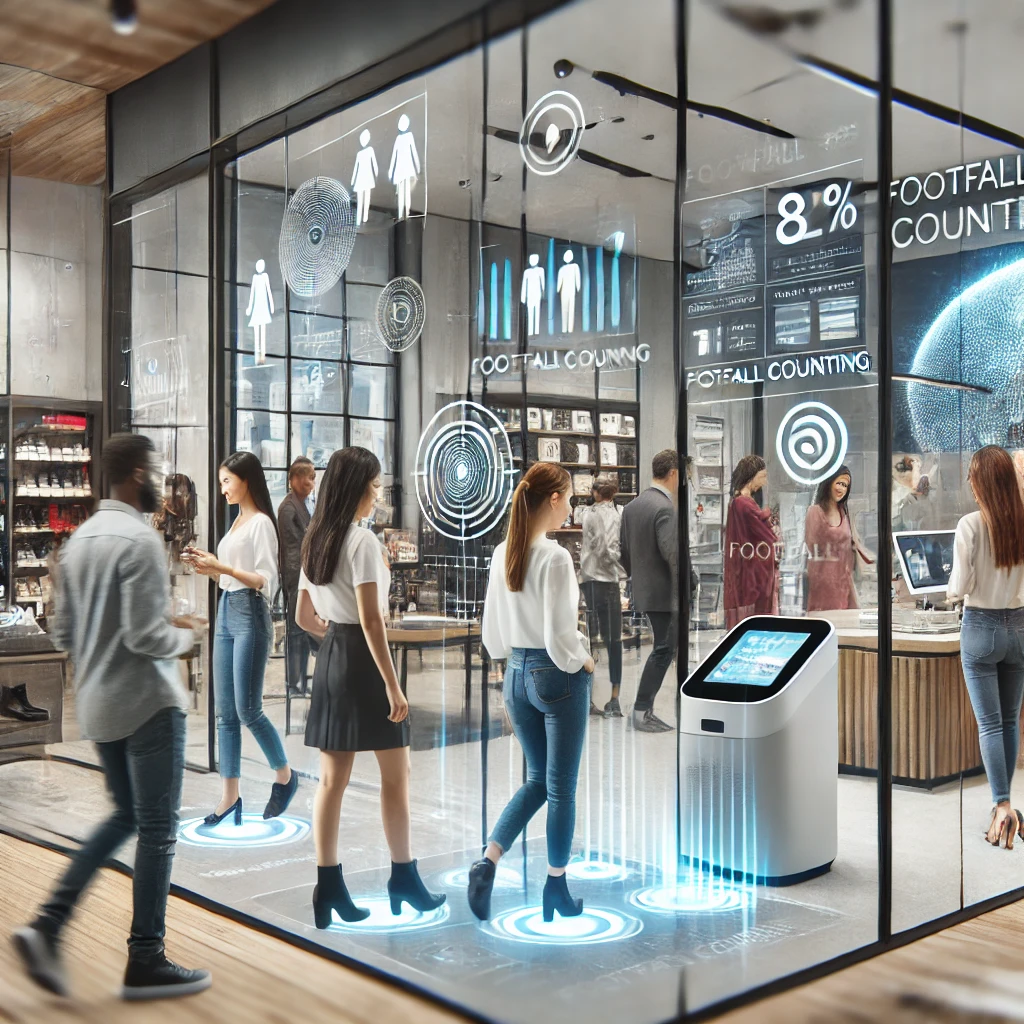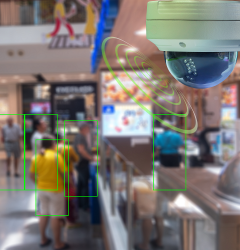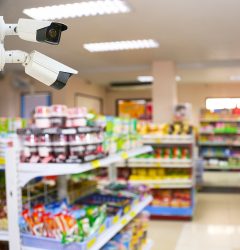Video Analytics
From Accuracy to Analytics: Tackling Footfall Counting Issues with Cutting-Edge Tech
18 Jul

Retail Analytics in 2024: Integrating People Counting with Big Data for Deeper Insights
In the ever-evolving retail industry, footfall counting isn’t just about numbers; it’s about what those numbers can tell us. The accuracy of these systems and the analytics derived from them can significantly influence business decisions, affecting everything from staff scheduling to marketing strategies. However, footfall counting systems often face challenges such as accuracy, data integration, and privacy concerns. In this post, we’ll explore these challenges and how cutting-edge technology is providing solutions that transform simple counts into strategic analytics.
Understanding the Challenges of Footfall Counting
Accuracy and Reliability
Accuracy remains a critical challenge with traditional footfall counting systems, often resulting in flawed data that can mislead business decisions. The older technologies, such as basic infrared sensors and pressure mats, are particularly prone to inaccuracies. These systems might count non-human objects as visitors or struggle to differentiate between individuals entering or exiting, leading to double-counting or missing counts altogether. Such errors become even more pronounced during peak traffic times when the volume of movement increases significantly. This miscounting not only skews the data but can drastically impact the reliability of the insights derived from it, affecting everything from staffing decisions to sales strategies. The inability of these older systems to accurately manage and interpret high-density traffic flows thus poses significant operational challenges for retailers looking to base their decisions on footfall analytics.
Data Integration
Integrating footfall data with other business intelligence systems presents a significant challenge for many retailers. The process of synthesizing diverse data streams—such as sales figures, promotional schedules, and customer feedback—into a unified and actionable dataset can be complex and cumbersome. Without a seamless integration, footfall data can end up isolated, preventing it from being effectively used in conjunction with other key business metrics. This compartmentalization can severely limit the strategic value of footfall data, as it restricts the ability to perform comprehensive analytics that consider multiple aspects of business performance. As a result, the potential insights that could be gained by correlating footfall with sales peaks, customer satisfaction levels, and promotional impacts are not fully realized, thereby diminishing the data’s utility in informing broader business strategies and decisions.
Privacy Concerns
The advent of advanced technologies, particularly in the realms of video and Wi-Fi tracking, has heightened privacy concerns significantly. As customers become more aware and regulatory bodies more stringent, the sensitivity around data collection and usage has intensified. This increasing vigilance necessitates that systems designed to gather analytics do so in a manner that respects individual privacy. Retailers must ensure that these technologies, while powerful tools for understanding customer behaviors and preferences, are implemented in compliance with privacy laws and ethical standards. This balance is crucial, as it protects consumer rights while still allowing businesses to collect the necessary data to enhance operational efficiency and personalize customer experiences. The challenge lies in deploying these systems in a way that maintains trust and transparency with customers, ensuring that data collection methods are clear and consensual.
Cutting-Edge Technologies Enhancing Footfall Counting
Modern footfall counting systems have evolved to incorporate video analytics combined with artificial intelligence (AI), transforming how retailers gather and interpret customer data. These advanced systems utilize AI-driven algorithms to process and analyze video footage in real time, allowing them to accurately distinguish between different types of movements, such as differentiating between customers entering or leaving the store. This capability extends to recognizing and categorizing specific customer behaviors and interactions within the store, such as time spent in particular aisles or interactions with displays. Importantly, these systems are designed to ensure that individual privacy is maintained by anonymizing data and focusing on behavioral patterns rather than personal identities. The integration of AI into video analytics enhances the accuracy and utility of footfall counting systems. By continuously learning from a stream of data, AI algorithms can refine their ability to detect and interpret complex patterns within the retail environment. Over time, these systems become more adept at identifying anomalies—such as unexpected surges in foot traffic or unusual customer pathways—which can provide critical insights for optimizing store layout and staff deployment. Additionally, AI’s ability to learn and adapt ensures that the system’s accuracy improves, minimizing errors that can lead to misinformed business decisions and enhancing the overall reliability of the data collected. Furthermore, modern footfall counting technologies can integrate demographic analysis without compromising privacy standards. By analyzing patterns across different demographic groups, identified through general attributes like age and gender, retailers can gain a deeper understanding of their customer base. This demographic data, collected in a way that respects privacy, allows retailers to tailor marketing strategies and store layouts to better suit the preferences of different customer segments. For example, a retailer might notice that younger customers are more drawn to technology displays and respond by enhancing these areas and stocking them with relevant products. This level of insight, powered by AI and video analytics, enables retailers to not only meet the current needs of their customers but also anticipate future trends and behaviors, creating a more personalized shopping experience.
Leveraging Data for Strategic Advantage
Real-Time Analytics
The real-time processing capabilities of modern footfall counting systems offer substantial benefits for retail management, allowing stores to respond swiftly and effectively to changes in customer traffic. For instance, these systems can alert managers immediately during unexpected surges in foot traffic, enabling the deployment of additional staff to busy areas to enhance customer service and potentially boost sales. This capability ensures that stores can manage customer experiences more effectively, leading to increased satisfaction and reduced wait times. Furthermore, real-time data helps managers make informed decisions about staffing and store layout adjustments, optimizing both the shopping experience and operational efficiency.
Predictive Analytics
Historical footfall data, when combined with AI, transforms into a powerful predictive tool that enables retailers to forecast future customer behaviors and traffic trends. This predictive capability is crucial for optimizing various aspects of retail operations. By analyzing past trends, AI algorithms can identify patterns and predict periods of increased or decreased customer flow. This foresight allows retailers to strategically plan promotions, aligning them with expected peak times to maximize exposure and sales potential. Additionally, it aids in efficient staffing, ensuring that the store is adequately staffed during busy times to enhance customer service, while minimizing unnecessary labor costs during quieter periods. Inventory management also benefits significantly from this predictive insight; retailers can ensure that stock levels meet anticipated demand without overstocking, thus optimizing both space and resources. Overall, the integration of AI with footfall data equips retailers with the intelligence needed to make proactive, data-driven decisions that enhance operational efficiency and improve customer satisfaction.
Enhanced Customer Experience
Footfall analytics provide retailers with valuable insights into customer behavior, allowing them to refine the shopping experience in a way that meets and exceeds customer expectations. By analyzing patterns in traffic and dwell times, retailers can make informed decisions about store layout, ensuring that popular items are easily accessible and high-traffic areas are optimized for customer flow. This level of customization extends to marketing efforts as well. Personalized marketing campaigns can be developed based on the preferences and behaviors observed through footfall data, enabling retailers to target customers with promotions and products that are most relevant to their interests. Additionally, targeted promotions can be strategically placed and timed to coincide with peak footfall periods, maximizing their effectiveness and boosting sales. These tailored strategies not only enhance the customer experience by making shopping more convenient and enjoyable but also increase customer loyalty by making consumers feel understood and valued by the retailer.
Conclusion
The incorporation of cutting-edge technologies into footfall counting systems is dramatically reshaping the landscape of retail analytics. These technological enhancements address long-standing issues such as data accuracy and integration, while simultaneously unlocking new possibilities in predictive and real-time analytics. As a result, footfall data is elevated from simple numerical counts to a fundamental element of strategic decision-making. In the rapidly evolving retail sector, the precision and depth of customer traffic analysis provided by these advanced systems represent a critical competitive edge. Consequently, investing in these sophisticated footfall counting technologies is increasingly seen as a prudent strategy for retailers who are keen to maintain relevance and outperform competitors in today’s dynamic marketplace.
Related Post
Tags
Keywords
Tags
Resources
© 2020-2024 Link Retail. All rights reserved.











